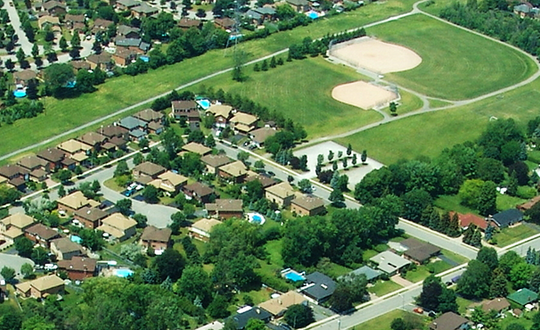
The Planning White Paper proposes far reaching reforms of the way the planning system works in England. In this briefing we consider how the proposals sit with the Government's wider environmental agenda.
Single statutory 'sustainable development' test for new local plans
At the heart of the Government's White Paper is a new zonal land plan system. For our overview of the proposals please see our briefing here. Under the new zonal system the local planning authority (LPA) would be required to draw up a new type of local plan, dividing land into three categories, growth, renewal and protection. The White Paper confirms that the reformed system will continue to protect the places of environmental and cultural value. Plans will still play a vital role in identifying not just areas of defined national and international importance (such as National Parks and SSSIs), but also those which are valued and defined locally (such as Conservation Areas and Local Wildlife Sites).
The White Paper states that "unnecessary assessments and requirements that cause delay and challenge in the current system" such as strategic environmental assessments (SEAs) which are currently carried out by LPAs would be abolished.
The current soundness tests for local plans would be replaced by the White Paper's proposed "single statutory 'sustainable development' test", to be set out in the National Planning Policy Framework (NPPF), with a slimmed down assessment of deliverability for the plan to be incorporated into the "sustainable development" test. The White Paper states that further consideration will be given to the way in which strategic cross-boundary issues, such as major infrastructure or strategic sites, can be adequately planned for, but for now it contains no further details.
It is not yet clear what this new statutory test will require but the proposal is clear that environmental considerations will be appraised alongside social and economic sustainability "to ensure plans strike the right balance between environmental, social and economic objectives". A consultation is expected in the Autumn.
Applying a single sustainable development test will certainly be difficult to achieve and tests that strive to "strike the right balance" during the current biodiversity crisis where arguably we need to be placing a higher duty on humans as the custodians of nature are likely to be challenged if the approach does not set a high benchmark in terms of protecting nature. It may be a lack of adequate policy in this area that has led to an increase in recent environmentally focussed litigation being brought by environmental campaigns and pressure groups. Potential challengers will no doubt be carefully scrutinising both the forthcoming test and the surrounding policy.
Changes to environmental impact assessments (EIAs)
The White Paper states that "processes for environmental assessment and mitigation need to be quicker and speed up decision making and the delivery of development projects." It continues, "[t]he environmental aspects of a plan or project should be considered early in the process, and to clear timescales. National and local level data, made available to authorities, communities and applicants in digital form, should make it easier to re-use and update information and reduce the need for site-specific surveys."
The Government's view is that the requirements for environmental assessment and mitigation need to be simpler to understand and consolidated in one place so far as possible, so that the same impacts and opportunities do not need to be considered twice.
The White Paper also states that the new system will need to ensure it meets domestic and international obligations and takes advantage of opportunities for environmental improvements.
Back in July 2020 the Secretary of State for Environment, Food and Rural Affairs, George Eustice MP, in a speech on environmental recovery, already signalled that after the Brexit transition period government may retain features of EU law that have worked but change those features that have not.
Very little further information has so far been provided on what the new EIA process will look like, but both Mr Eustice and the White Paper promise a separate and more detailed consultation paper in the 'Autumn'.
A number of professional commentators have welcomed in principle benefits of better local planning and the benefits of making the assessment process quicker. However, this is tempered by significant concerns on the veracity and comprehensiveness of existing data to inform the new local plans, the time that would be needed to achieve national coverage (if that is what is intended), and the resources of LPAs to undertake the necessary data processing.
Mr Eustice also raised the question on which habitats and species will be protected post Brexit by suggesting in his July speech that by leaving the EU the UK government would be permitted to amend the list of protected species to make this more characteristic of the UK referring to veteran trees, ancient woodland, water voles, red squirrels, adders and pine martins.
Net gains for biodiversity
The White Paper states the Government's support for net gains for biodiversity and notes that Parliament will legislate for mandatory net gains for biodiversity as a condition of most new development. Further, the Local Nature Recovery Strategies which the Bill will also introduce will identify opportunities to secure enhancements through development schemes and contributions. The White Paper also includes the suggestion that the NPPF will be revised to ensure that the new planning system facilitates environmental improvements.
'Zero carbon ready' homes
In its report 'UK housing: fit for the future?' the Committee on Climate Change (CCC) warned last year that, "the UK's legally-binding climate change targets will not be met without the near-complete elimination of greenhouse gas emissions from UK buildings".
On 2 May 2019 the CCC provided advice to government that recommended that that the UK should legislate as soon as possible to reach net-zero greenhouse gas emissions. The Government accepted this advice and committed to a 100% reduction in its greenhouse gas emissions by 2050 compared with 1990 emissions and legislated for this by amendment to the Climate Change Act 2008.
The White Paper acknowledges that the planning system is one of the tools to use to mitigate and adapt to climate change but refers to its 2019 Future Homes Standard consultation as a first step towards net zero homes. Further, from 2025, the Government expects new "zero carbon ready" homes to produce 75-80 per cent lower CO2 emissions compared to current levels and with the ability to become fully zero carbon homes over time as the electricity grid decarbonises, without the need for further costly retrofitting work. The intention appears to be to deliver these improvements principally via the Future Homes Standard and a tightening of Building Regulations regime for new buildings.
The White Paper expresses the hope that "[a]s local authorities are freed from many planning obligations through our reforms, they will be able to reassign resources and focus more fully on enforcement. Ensuring that planning standards and building regulations are met, whether for new homes or for retrofitting old homes, will help to ensure that we deliver homes that are fit for the future and cheaper to run." Whether this will be borne out in practice and in these financially difficult times remains to be seen.
Comment
It will be interesting to understand the further detail of the proposals contained in the White Paper and in any further consultations on aspects of those proposals including the single statutory 'sustainable development' test for new local plans.
A White Paper proposal which appears to be somewhat at odds with the support for biodiversity net gains is the proposal for a consolidated infrastructure levy and the suggestion within that proposal that this might mean the end of section 106 agreements. Without the continuation of the flexible mechanism of section 106 agreement to deal with non-monetary contributions it is difficult to understand how such contributions would be secured e.g. 30 year management plans.
The Environment Bill which has been significantly delayed is now back and since 3 November 2020 being considered again by a Public Bill Committee which is scheduled to report by Tuesday 1 December 2020. Speaking at an All Party Parliamentary Group on the Environment George Eustice indicated that the Environment Bill, would not receive royal assent in 2020 and that it might not reach the House of Lords until early 2021 and so may not enter the statute book until July 2021. He also suggested that The Office for Environmental Protection (OEP) would not be fully staffed and functioning before perhaps October 2022 with a 'shadow secretariat' set up in the interim to begin the process of appointments to the OEP and to define the new Office's strategy.
If the environment is truly to be protected through the planning reforms and the further reforms under the Environment Bill it will also be vital that the statutory consultees, especially the Environment Agency and Natural England are adequately resourced to deal with the forthcoming reforms as well as their current caseload.
This article is attributed to Jed Dillon, Trainee Solicitor.
This article is for general information only and reflects the position at the date of publication. It does not constitute legal advice.






